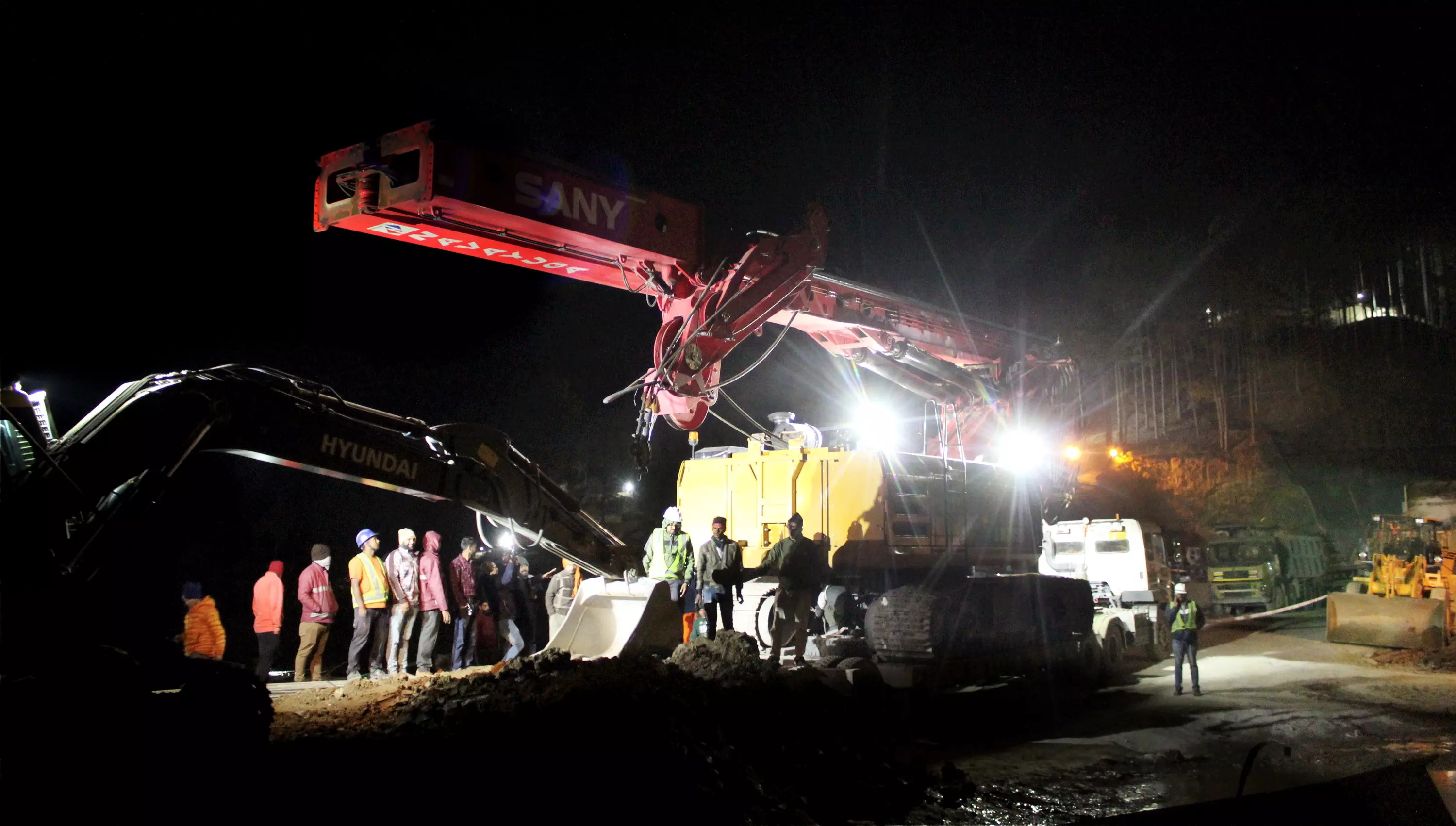
Ground report | Uttarkashi tunnel collapse: 12m more and workers will be free
Rescue work may be completed by Wednesday night or early Thursday; uninterrupted drilling covers tough, rocky portions; only 12–13 metres of softer rocks left

On the 11th day of the rescue operations at the Silkyara tunnel collapse site in Uttarakhand’s Uttarkashi district, two high-profile DRDO robots have joined in to give more teeth to the efforts.
Thanks to the challenging Himalayan topography and the soft soil, rescue operations have been painfully slow and often thwarted by unforeseen circumstances. Now, on the request of the rescue teams on the ground, the Defence Research and Development Organisation (DRDO) has sent two remotely operated vehicles (ROVs) to hopefully speed up the rescue work.
Puthiya Thalaimurai correspondent Niranjan, reporting from the ground, said on Wednesday (November 22) that the rescue may be completed by night or early Thursday morning. “The rescue team is going about it in a perfectly planned way,” he reported. “Officials have confirmed that the rescue operation will be completed by this evening or, at most, early morning tomorrow.”
About the DRDO bots
It was not immediately clear how the two rovers — primarily designed to locate, handle, and destroy improvised explosive devices (IEDs) and similar hazardous objects — would help with the rescue mission where several attempts with larger machines have so far failed.
The duo — Daksh Mini and Daksh Scout — are members of the DRDO’s Daksh series of ROVs. Daksh is mainly used by the bomb disposal squads of the Army, police, and paramilitary forces.
Daksh Mini is specifically designed for confined spaces. It can operate continuously for two hours on a single charge and can be remotely operated within 200 metres. The ROV’s arm can lift loads up to 20 kg and it is equipped with high-resolution cameras.
The Daksh Scout, on the other hand, is designed for surveillance. It can function on all kinds of surfaces, climb stairs, and go down slopes. It is armed with cameras for a 360-degree view. Alongside their impressive abilities, both rovers are highly portable too.
Nearly there
Side by side, drilling with the American auger machine is going on as well. Drilling resumed over Tuesday night to prepare an escape passage for the trapped workers after being suspended on Friday when the machine hit a hard, metallic object.
Puthiya Thalaimurai correspondent Niranjan said, “To rescue the workers, pipes have to be pushed up to 57 metres. Just 12–13 metres are still left. Drilling has been happening since 12.05 am on Wednesday.”
“The work has been uninterrupted, with no major impediments. The tough, rocky portions are already covered. Only the ‘easier’ portions, with softer rocks, are left,” he said, quoting officials.
“The rescued workers will be taken to hospitals as soon as they’re out. The district hospital has been readied for this. Those who need more medical attention will be transferred to a hospital in Dehradun. Ambulances are already at the site, and helicopters are also ready,” Niranjan reported.
“The rescuers are not expected to go in and fetch the workers. Since they are in reasonable health, the workers will likely come out by themselves,” he explained, adding that Uttarakhand Chief Minister Pushkar Singh Dhami is expected to arrive at the site 60–90 minutes before the final leg of the operation.
Mammoth rescue ops
Forty-one workers have been stuck in the under-construction tunnel following a landslide on November 12. The tunnel, which is part of the Centre’s ambitious Char Dham project, is located between Silkyara and Dandalgaon. The workers are reportedly trapped some 260 metres from the entrance of the tunnel’s Silkyara end. Audio-visual contact has confirmed that all of them are in good health.
Several organisations, including the National Highways & Infrastructure Development Corporation Limited, the Rail Vikas Nigam Limited, the Border Roads Organisation, the Tehri Hydroelectric Development Corporation, the Sutlej Jal Vidyut Nigam Limited, and the Oil and Natural Gas Corporation, are working in their own capacities to aid the rescue efforts.

